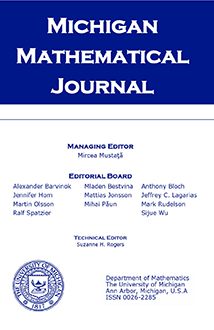Abstract
For a finitely generated group G, let denote Bowditch’s taut loop length spectrum. We prove that if is a small cancellation quotient of a the free product of finitely generated groups, then is equivalent to . We use this result together with bounds for cohomological and geometric dimensions, as well as Bowditch’s construction of continuously many non-quasi-isometric small cancellation 2-generated groups to obtain our main result: Let denote the class of finitely generated groups. The following subclasses contain continuously many one-ended non-quasi-isometric groups:
(1) ;
(2) ;
(3) .
On our way to proving the aforementioned results, we show that the classes defined above are closed under taking relatively finitely presented small cancellation quotients of free products; in particular, this produces new examples of groups exhibiting an Eilenberg–Ganea phenomenon for families.
We also show that if there is a finitely presented counterexample to the Eilenberg–Ganea conjecture, then there are continuously many finitely generated one-ended non-quasi-isometric counterexamples.
Citation
Eduardo Martínez-Pedroza. Luis Jorge Sánchez Saldaña. "Bowditch Taut Spectrum and Dimensions of Groups." Michigan Math. J. 74 (3) 527 - 550, July 2024. https://doi.org/10.1307/mmj/20216121
Information





